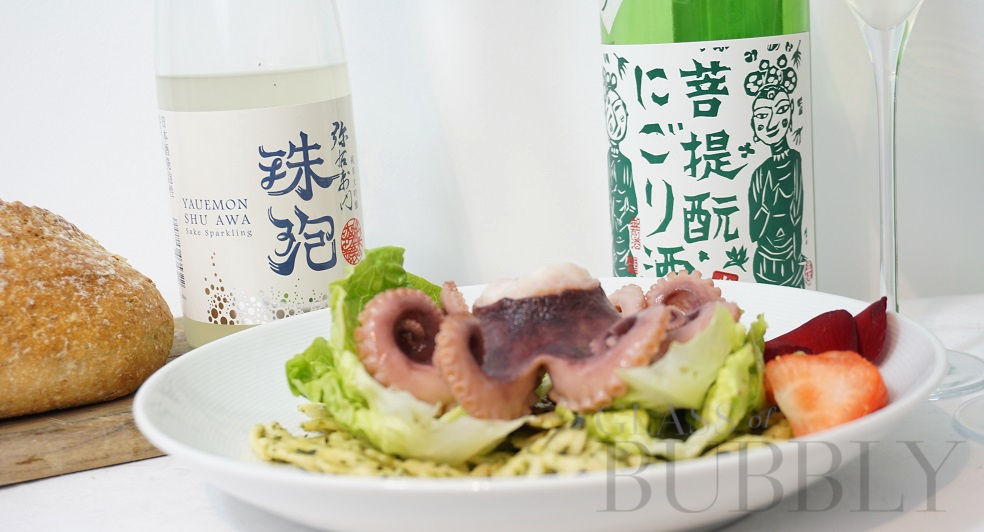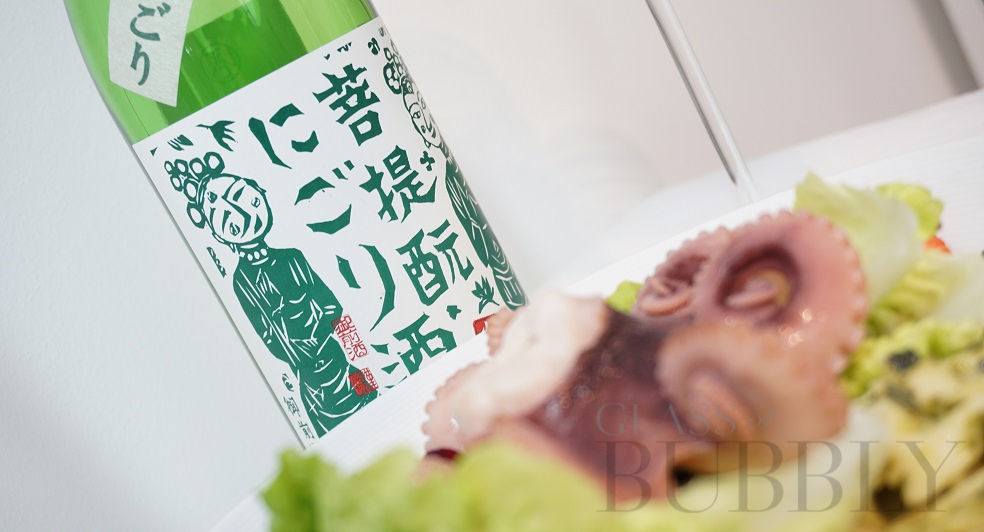Octopus and Sake – A Taste of Japan
13th January 2023

The Octopus is considered a delicacy, it’s mainly enjoyed in Asia and the Mediterranean, but can be enjoyed all over the world, we’re taking this opportunity to pair the Octopus with two different bottles of Sake, Rice Wine from Japan, to see how the two flavours combine, but first, let’s find out a little about the Octopus and it’s vast history, predating mankind.
Octopus
The highly intelligent, unbeatable break dancer and endless ink provider, the Octopus, this fascinating sea mollusk inhabits various regions of the ocean, including the coral reefs, pelagic waters, and the seabed.
They live fast and die young, sticking around for 3-5 years, near the end of their lives, they find a partner and reproduce, the male uses a specially adapted arm to deliver his sperm directly into the female’s mantle cavity, after which he becomes senescent and dies, the female then deposits her fertilised eggs in a den and cares for them until they hatch, after which she also dies, and the cycle begins all over again.
She can lay tens of thousands of eggs, there are different numbers online, with some saying as low as 20,000 with others saying up to 500,000 eggs, but no matter how many eggs are laid, only around 1% will survive.

One of the things an Octopus is most famous for is its ink, they deploy this as a defense mechanism against predators, just like a smoke screen, allowing them a moment to camouflage themselves, it can also be used as a warning to predators.
All octopuses are venomous, but the only one known to be deadly to us humans is the blue-ringed octopus.
With ancestors dating back 328 million years, they’ve experienced a lot, but back then, researchers believed that they had 10 arms, instead of the 8 they have now, they’ve named the previously unknown species Syllipsimopodi bideni.
Throughout history, the history of man, the octopus has been featured in mythology as a terrifying sea monster like the Kraken of Norway and the Akkorokamui of the Ainu.
A battle with an octopus appears in Victor Hugo’s book Toilers of the Sea, published in 1866, it helped inspire Ian Fleming’s Octopussy, the Octopus also appears in a lot of Japanese erotic art.
Yauemon Shu Awa

Crafted using the traditional champagne method (second fermentation in the bottle), Pearl is made from rice grown on the brewery’s own farm and polished to 45% making this a Junmai Daiginjo – the highest class of sake.
Pearl is also lightly cloudy and makes quite an impression when opened: the bubbles rise and gently mix the sake, turning it from clear to cloudy!
Yamatogawa Shuzoten brewery was founded in 1790 in Kitakata, Fukushima. The region is blessed with optimal sake brewing conditions of excellent quality, soft meltwater from the Lide mountain range and cold winters.
You can pair Sake with a variety of different food/dishes, this Pearl Sake is recommended to pair well with cream cheese, oysters, truffle honey, smoked salmon, avocado and fruit salads.
Yauemon Shu Awa – Pearl – Sparkling Junmai Daiginjo – Tasting Notes
Aroma – “Sweet candied rice, candy pear drops, ripe green pears, white pears, bruised green apples, apple blossom, wonderful freshly boiled sushi rice, with a sweet zestiness on the aroma.”
Flavour – “Soft, delicate expression of ripe green pears, white pears, bruised red apples, pear drops, pear blossom, peach and freshly cooked sushi rice, a great delicate expression.”
Misty Mountain

This Sake has the unique characteristic of a cloudy brew, with the cloudiness coming from the fact that these sakes are unfiltered – or in the case of Misty Mountain, partially filtered – leaving some of the rice lees still in the bottle.
Misty Mountain is also made using the ancient Bodaimoto method, which tends to yield slightly earthier and sourer sake (this is a good thing!).
Tsuji Honten – in Katsuyama town, Okayama, Japan – was founded in 1804. Today’s brother & sister team, Soichiro & Maiko Tsuji, are the seventh generation brewers. Tsuji Honten are pioneers of using Omachi rice and an ancient, medieval brewing technique: Bodaimoto.
You can pair Sake with a variety of different food/dishes, this Misty Mountain Sake is recommended to pair well with blue cheese and spicy/peppery dishes.
Misty Mountain – Junmai Bodaimoto Nigori – Tasting Notes
Aroma – “Sweet and sour, with rice water, light milk, with marzipan and almond, passion fruit with slight peppery notes on the aroma.”
Flavour – “Green characters, vegetable skin, well cooked sushi rice water, ripe passion fruits and peppery notes on the palate.”
Octopus and Sake Pairing
Both bottles of Sake have their own unique character, each took different angles when paired with the Octopus, the Pearl was lighter, gliding over the Octopus raining down its wonderful ripe green and white pears, pear drops and pear blossom flavours, and the Misty Mountain went in stronger, took control and enhanced the Octopuses meaty flavours.

![]()
Oliver Walkey
Champagne and Sparkling Wine Writer, Focused on Bringing the Exciting and Fascinating World of Bubbly to You.
